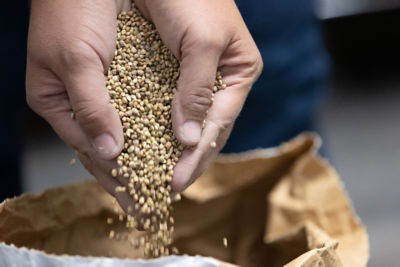Causal Agent
Sclerotinia sclerotiorum
Distribution
Worldwide
Symptoms
The first symptoms of white mold are dark-green, water-soaked lesions that develop on foliage, stems and fruit. Occasionally, the host may exhibit dry lesions on the stalk, stem or branches with a well-defined border between healthy and diseased tissues. Stem infections frequently girdle the stem at the soil line, causing plants to wilt and die. Petiole or bud infections proceed downward in the plant rapidly. Fruit infected directly from the soil surface or through the peduncle rot quickly and turn into a watery mass. In advanced stages, white, cottony mycelium blankets affected tissue, and sclerotia form on the surface. Sclerotia also may form within the stem pith and fruit cavities, becoming black and hard as they mature.
 Sclerotia within a stem.
Sclerotia within a stem.
Conditions for Development
This fungus has a wide host range and survives from one season to the next as sclerotia in soil and in plant debris. White mold is most common in temperate regions but is also known to occur in hot, dry areas. Dew, fog and frequent rain generally favor disease development. The most important means of longdistance spread are airborne ascospores that erupt from sclerotia. Moving contaminated soil and fertilizing with manure from animals fed infected plant debris are two common ways of short-distance spread of sclerotia or mycelium. Irrigation water may also spread the fungus from field to field.
Control
Plant in well-drained soil, use wide row spacing and water deeply, early in the day. Remove all plant debris from previous crops. Manure and plant mulches suspected to come from infected locations should not be used unless sterilized. Establish a crop rotation with non-host crops such as corn, small grains and grasses. Soil fumigation can be effective at helping to reduce soilborne inoculum.




